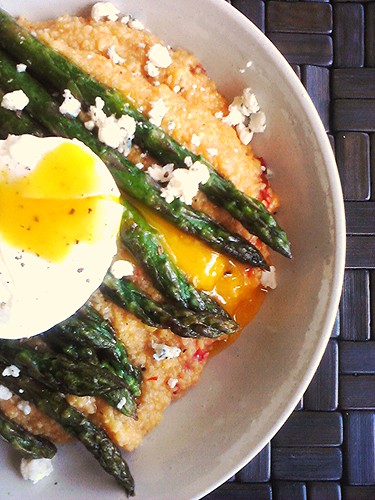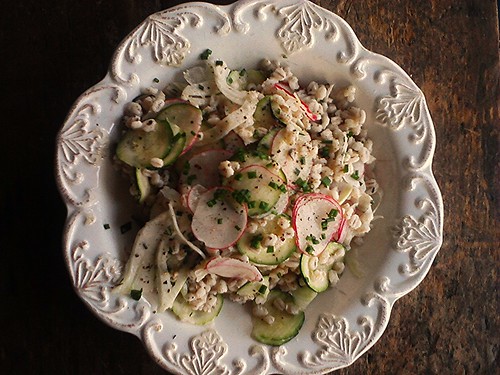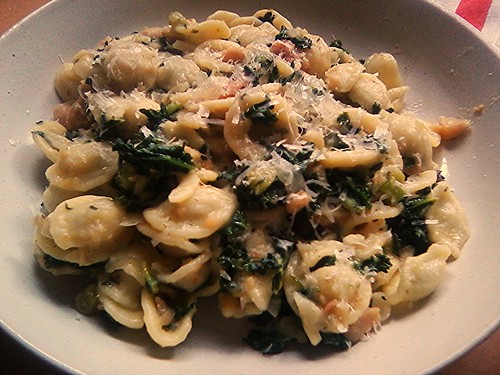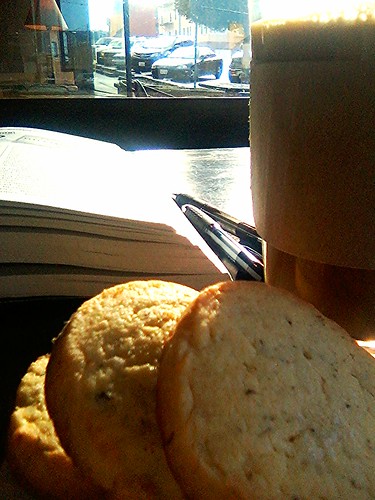Yaaayyy asparagus! Love it. Almost as much as I love polenta. Add a flowing stream of warm runny egg yolk and my meal in a bowl is a gorgeous feast.
Asparagus came into the market a few weeks ago and I've been jonesing to make this ever since, but I sort of got side tracked by my current obsession with cauliflower soup and roasting cauliflower and tossing it around in gratins and grain bowls.
I like to buy polenta in bulk when I can, the coarse ground, not the quick cooking type. I'll cook a fairly large batch because I love the leftovers. My basic recipe goes something like this:
4 1/2 cups water
4 teaspoons Better Than Bouillion low-sodium chicken broth base (optional)
1 teaspoon sea salt
1 1/2 cups polenta
2 tablespoons butter
1/2 cup grated Parmigiano Reggiano
Bring the water to a boil in a large pot (that has a lid to fit). Whisk in the broth base if you're using it. Add the salt. Whisk in the polenta. Using a flat edged wooden paddle, continue to stir the polenta until it starts to thicken a little. Turn the heat down to medium and cover the pot. Stir it every ten minutes for a total cooking time of 30 minutes. It may seem like it's done earlier, but it'll be less grainy and sweeter if it continues to cook the full 30 minutes.
Stir in the butter and cheese. If you prefer it creamier add some milk or more water/broth.
This is my favorite way to prepare asparagus:
Snap off the tough ends of the asparagus spears. Heat about a tablespoon of olive oil in a skillet on medium-high heat, when the oil starts to shimmer, add the asparagus spears to the pan so they line up side by side. Add few pinches of large grain sea salt and crushed red pepper flakes. Move the pan back and forth so the oil coats the spears and to allow the seasonings to distribute. Cover and cook for 5-7 minutes, shaking the pan occasionally, until the asparagus starts to brown and is cooked through.
Within my polenta I like to stir in any or all of my favorite flavor enhancers like roasted red peppers, slow-roasted grape tomatoes or caramelized onions. This batch includes all three. Over-kill? Perhaps, but that's just how I roll. Oh yeah...and I crumbled on the last bit of my Pt. Reyes Original Blue Cheese. Oh yeah.



